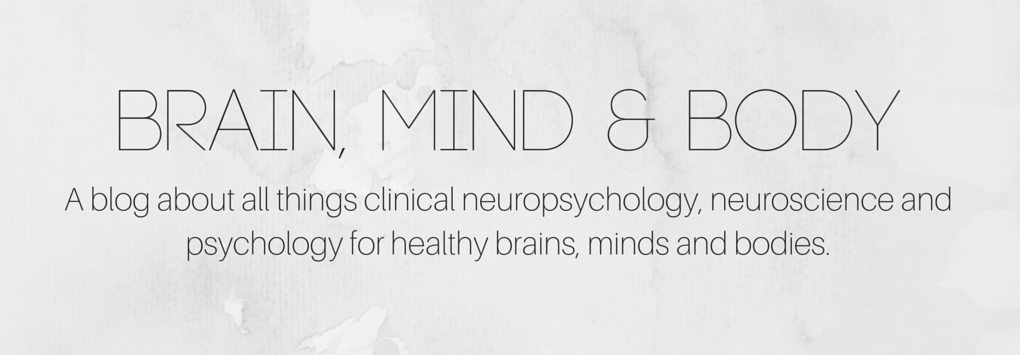 |
| image via shutterstock.com |
Whether we like to admit it or not, most of
us are guilty of having had a little bit too much to drink at one time or
another. You might have drowned your sorrows and stress after a hard week at
work, or been caught up in celebrations and indulged in a few too many at a
wedding. Or maybe, it was by complete accident that you suddenly found yourself
lit up like a Christmas tree, and arrived at work on Monday morning claiming
fewer brain cells than you went home with on Friday afternoon.
But what do we actually know about the
effects of alcohol on the brain? Does it really ‘kill’ our brain cells, or is
it a little more complicated than that?
The
physiology
Alcohol is a central nervous system
depressant.
In other words, it has a ‘slowing down’ effect on brain function. This might
seem a little strange; alcohol is commonly seen as a ‘pick-me-up’, because in
the initial stages of consumption, we become more animated and less reserved.
However, the opposite of this occurs when we continue to drink and more alcohol
enters the brain.
In the brain, alcohol easily crosses the
blood-brain barrier,
an important membrane separating the blood from the fluid surrounding our
brains. The purpose of the blood-brain barrier is to protect the brain from
harmful substances. When it crosses this barrier, alcohol directly affects our neurotransmitters
and receptors of neurons, and therefore interrupts the successful transmission
of signals from the brain to the body, and the body to the brain.
Our neurotransmitters (NTs) can either be
excitatory (causing an increase in activity) or inhibitory (causing a decrease
in activity). Alcohol promotes the effects of our inhibitory NTs,
while simultaneously reducing the effects of our excitatory NTs; hence its
depressant effect on our nervous system. Alcohol also increases the amount of
dopamine (one of our ‘feel-good’ chemicals) in the brain’s reward system,
creating the feeling of pleasure that occurs when we drink.
 |
| image via shutterstock.com |
Binge
drinking and the brain
The short-term effects of alcohol consumption
are well known, and have likely been experienced by many of us. A pattern of
drinking is considered ‘binge drinking’ after 4 or more drinks are consumed on one occasion for women, and 5 or more
drinks for men. But what's actually happening in the brain after we've thrown back those four or five
drinks?
Slowed reaction times, lowered inhibitions,
difficulty concentrating, slurred speech; these commonly experienced side
effects of alcohol consumption are a direct result of misfiring brain signals being
unable to get from A to B as easily as they should. Alcohol simply reduces the
efficiency and effectiveness of the brain signals that allow us to function
normally, both physically and mentally.
Ever wondered why memories of the night
before are never quite as good as we hope they would be? That’s because when we
drown our cells in alcohol, our poor hippocampi can’t do their thing and
consolidate these memories while we sleep.
While sessions of binge drinking in the
short-term don’t necessarily ‘kill’ our brain cells, they certainly get in the
way of our brain’s ability to function optimally.
Long-term
use or abuse
We know that many of the immediate effects
of alcohol consumption resolve when we sober up. However, when a person drinks
heavily over a prolonged period of time, some of these impairments may persist
long after sobriety is achieved.
Long-term drinking can lead to brain
atrophy (shrinkage), and permanent damage of the fibres that transmit signals
and carry information from one neuron to the next.
Many long-term alcoholics also develop a neuropsychological condition called
Wernicke-Korsakoff Syndrome (WKS), which is caused by a thiamin deficiency (a B vitamin). People with WKS
experience vision changes (nystagmus),
problems with walking and coordination (ataxia),
and significant cognitive disturbance (dementia). Fortunately, some of the acute
symptoms of WKS can resolve when an individual’s thiamin returns to a healthy
level.
 |
| via giphy.com |
The
hungover brain
Dehydration is the known culprit for that shocking hangover we’ve all woken up with. But what many don’t know is that our brains are actually to blame for causing this dehydration in the first place.
Dehydration is the known culprit for that shocking hangover we’ve all woken up with. But what many don’t know is that our brains are actually to blame for causing this dehydration in the first place.
When alcohol crosses the blood brain
barrier, it causes our pituitary gland to block the creation of vasopressin,
the antidiuretic hormone. Without vasopressin, the brain tells the kidneys to
send water directly to the bladder without letting it reabsorb back into the
body. And that headache we all know and dread? That’s our organs making up for
their lack of water by stealing water from the brain. This causes our brains to
shrink a little, and pull on the membranes connecting the brain to the skull. Hello headache!
Are
our brain cells safe?
The odd night out drinking or accidental
over-indulging in the alcohol stakes aren’t quite enough to ‘kill’ our precious
brain cells. However, long-term serious alcohol use (or addiction) can
certainly lead to permanent damage to the cells in our brain, and associated
physical and neuropsychological symptoms.
The important thing to remember is
everything in moderation, and for the sake of future you, doing everything
possible to prevent or alleviate that hangover when you have indulged. Drink
plenty of water throughout the night (and the following day) to replenish the
water lost in the brain and the body, and there’s certainly no harm in downing some
vegemite toast before bedtime if you’re worried about those thiamin levels.












